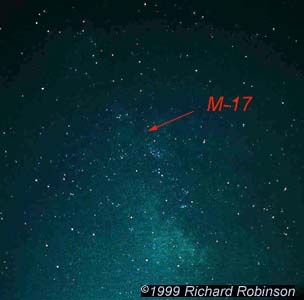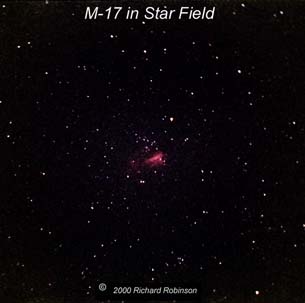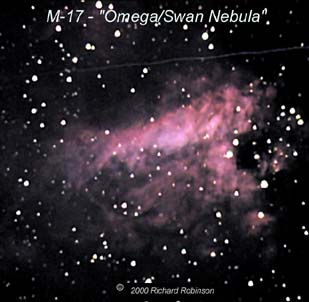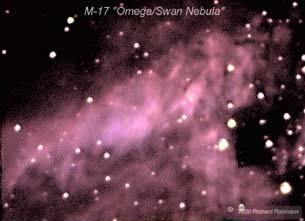|
|
|
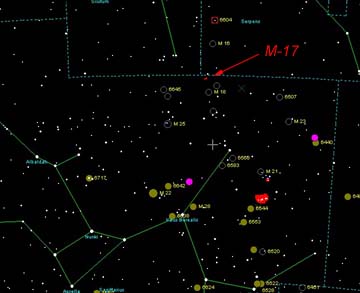 |
Size: 11 x 6 arcmin Magnitude: RA: 18h 20m 45s Dec: -16 d 10m 0s |
| M-17 is several degrees above M-8. The stars around M-17 are easy objects for amateur scopes and the nebula begins to appear even with short CCD exposures. However, seeing the nebula itself may be a challenges unless you have dark skies. Binoculars may show a fuzzy patch of light, at the location shown in the image below taken with the Nikon Camera. | |
